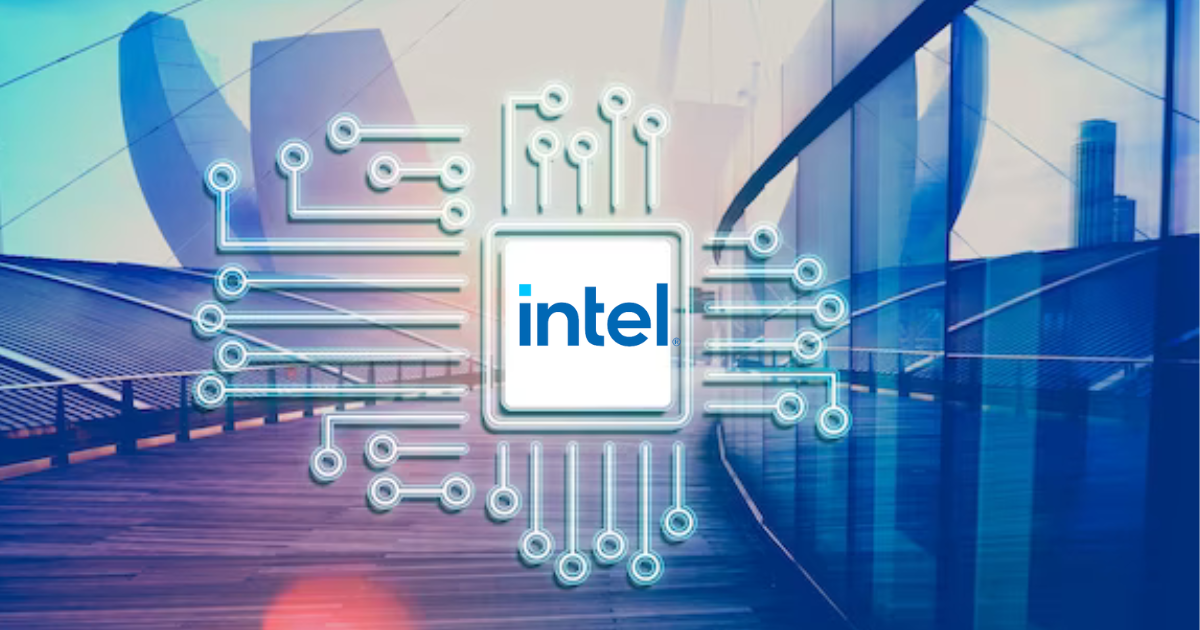Intel Aims at AMD
Intel has intensified its competition with AMD by unveiling its next-generation Xeon server processors, which aim to capture a larger share of the data center market. These processors promise enhanced performance, efficiency, and scalability, catering to the increasing demands of modern data centers. The new Xeon processors incorporate advanced features such as improved AI capabilities, better security, and higher memory bandwidth, making them a compelling choice for enterprises seeking robust and reliable solutions for their data-intensive workloads.
In addition to the Xeon processors, Intel introduced its Gaudi 3 artificial intelligence (AI) accelerator chips. These chips are designed to accelerate AI workloads, such as machine learning and deep learning applications, which are critical in various industries including healthcare, finance, and technology. One of the key strategic moves by Intel is the competitive pricing of the Gaudi 3 chips, which are set to be significantly cheaper than those offered by competitors. This pricing strategy is aimed at making AI acceleration more accessible and affordable, thereby encouraging more businesses to adopt Intel’s AI solutions over those from rivals like NVIDIA.
The launch of these new products is part of Intel’s broader strategy to reclaim its leadership in the data center market, which has seen increasing competition from AMD and other semiconductor companies. AMD’s EPYC processors have gained traction due to their high performance and cost-effectiveness, prompting Intel to innovate and enhance its product offerings. By delivering cutting-edge technology and competitive pricing, Intel aims to attract both existing customers and new ones, thereby strengthening its position in the industry.
INTEL vs AMD
Determining whether Intel or AMD is the better chipmaker depends on several factors, including the specific use case, performance metrics, power efficiency, pricing, and individual preferences. Both companies have their strengths and weaknesses, and the “better” choice can vary depending on the context. Here’s a comparison of Intel and AMD across different aspects:
Performance
- Consumer CPUs:
- Gaming: Intel has traditionally held an edge in gaming performance due to higher clock speeds and better single-threaded performance. However, AMD’s Ryzen 5000 and 7000 series have closed this gap significantly, offering competitive performance and often better value.
- Multitasking and Productivity: AMD’s Ryzen processors, particularly the higher-core count models like the Ryzen 9 series, often outperform Intel in multitasking and productivity tasks due to their higher thread counts and efficient architectures.
- Data Centers:
- Intel Xeon: Known for stability and compatibility with a wide range of enterprise software, Intel Xeon processors have been a staple in data centers for years.
- AMD EPYC: AMD’s EPYC processors have gained significant market share due to their superior price-to-performance ratio, higher core counts, and advanced features like PCIe 4.0 support.
Power Efficiency
- Intel: Traditionally, Intel has been known for better power efficiency in some of its product lines, but this has varied across different generations.
- AMD: With the introduction of the Zen architecture, AMD has significantly improved its power efficiency, often surpassing Intel in performance-per-watt metrics in both consumer and server markets.
Pricing
- Intel: Intel processors tend to be priced higher, especially in the high-end segment. However, Intel often offers competitive pricing in the mid-range and entry-level segments.
- AMD: AMD generally provides better value for money, offering more cores and threads at lower prices compared to Intel. This has made AMD a popular choice among budget-conscious consumers and businesses.
Innovation and Features
- Intel: Known for robust R&D, Intel frequently introduces cutting-edge features such as advanced integrated graphics, Thunderbolt support, and various security technologies.
- AMD: AMD has been innovative with features like Precision Boost, Infinity Fabric, and strong integrated graphics in their APUs. Their recent architectures have also introduced significant performance improvements.
Market Perception and Ecosystem
- Intel: Has a long-standing reputation in the industry, with strong relationships with OEMs and software developers. Intel’s ecosystem support is extensive, especially in enterprise environments.
- AMD: Once considered a budget alternative, AMD has reshaped its image as a performance leader with its Ryzen and EPYC lines. The Ryzen Master software and AMD’s open approach to overclocking and tweaking are popular among enthusiasts.
Recent Developments
- Intel: The latest Xeon and Core processor lines show Intel’s commitment to regaining its performance leadership, with significant improvements in AI acceleration, security, and efficiency.
- AMD: Continues to innovate with the Zen 4 architecture and beyond, focusing on increasing IPC (instructions per cycle), core counts, and energy efficiency.

STA Research (StockTargetAdvisor.com) is a independent Investment Research company that specializes in stock forecasting and analysis with integrated AI, based on our platform stocktargetadvisor.com, EST 2007.



































